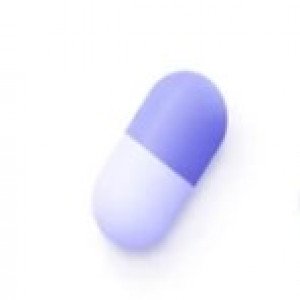 Welcome
Welcome
“May all be happy, may all be healed, may all be at peace and may no one ever suffer."
Medimet Pharmaceuticals Ltd.
Ampimet 250mg

Generic for Diseases
- Jaundice
- Cholecystitis
- Intussusception
- Intestinal obstruction
- Bronchiolitis
- Cor Pulmonale
- Endocarditis
- Erysipelas
- Gonorrhea
- Tonsillitis
- Traumtic eye
- Foreign Body in eye
- Iritis
- Nephrotic syndrome
- Pyelitis
- Cystitis
- Bladder stones
- Kidney stones
- Salpingitis
- Preeclampsia
- Leucorrhoea
- Burns
Ampicillin inhibits bacterial cell wall synthesis by binding to 1 or more of the penicillin-binding proteins (PBPs) which in turn inhibit the final transpeptidation step of peptidoglycan synthesis in bacterial cell walls. Bacteria eventually lyse due to ongoing activity of cell wall autolytic enzymes (autolysins and murein hydrolases) while cell wall assembly is arrested.
Ampicillin is indicated in the treatment of infections caused by susceptible strains of the designated organism listed below:
- Infections of the Genitourinary Tract Including Gonorrhea: E. coli, P. mirabilis, enterococci, Shigella, S. typhosa and other Salmonella, and nonpenicillinase-producing N. gononhoeae.
- Infections of the Respiratory Tract: Nonpenicillinase-producing H. influenzae and staphylococci, and streptococci including streptococcus pneumoniae.
- Infections of the Gastrointestinal Tract: Shigella, S. typhosa and other Salmonella, E. coli, P. mirabilis, and enterococci.
- Meningitis: O. Meningitides.
Bacteriology studies to determine the causative organisms and their sensetivity to ampicillin should be performed. Therapy may be instituted prior to the results of susceptibility testing.
Intra-articular:
Supplement in systemic therapy for treatment of susceptible infections-
- Adult: 500 mg daily.
- Child: <10 yr Half of adult routine dosage.
Intraperitoneal:
Supplement in systemic therapy for treatment of susceptible infections-
- Adult: 500 mg daily.
- Child: <10 yr Half of adult routine dosage.
Intrapleural:
Supplement in systemic therapy for treatment of susceptible infections-
- Adult: 500 mg daily.
- Child: <10 yr Half of adult routine dosage
Intravenous:
Meningitis-
- Adult: 2 gm 6 hrly.
- Child: 150 mg/kg daily in divided doses.
Intrapartum prophylaxis against group B Streptoccocal infection in neonates-
- Adult: Initially, 2 gm via IV inj followed by 1 gm 4 hrly until delivery.
Oral:
Biliary tract infections, Bronchitis, Endocarditis, Gastroenteritis, Listeriosis, Otitis media, Perinatal streptococcal infections, Peritonitis-
- Adult: 0.25-1 gm 6 hrly.
- Child: <10 yr Half of adult routine dosage.
Typhoid and paratyphoid fever-
- Adult: 1-2 gm 6 hrly for 2 wk in acute infections, and 4-12 wk in carriers.
Uncomplicated gonorrhoea-
- Adult: 2 gm with 1 gm of probenecid as single dose, recommended to be repeated in female patients.
Urinary tract infections-
- Adult: 500 mg 8 hrly.
Parenteral:
Susceptible infections-
- Adult: 500 mg 6 hrly, via IM or slow IV inj over 3-5 min or by infusion.
- Child: <10 yr Half of adult routine dosage.
Septicaemia-
- Adult: 150-200 mg/kg daily. Initiate with IV admin for at least 3 days, then continue with IM inj 3-4 hrly. Continue treatment for at least 48-72 hr after the patient has become asymptomatic or when there is evidence of bacterial eradication. Recommended treatment duration for infections caused by group-A β-haemolytic streptococci: At least 10-days, to prevent occurrence of acute rheumatic fever or acute glomerulonephritis.
- Child: Same as adult dose.
Should be taken on an empty stomach. Take 1 hr before or 2 hr after meals.
Hypersensitivity to ampicillin and other penicillins.
Nausea, vomiting, diarrhoea, erythematous maculo-papular rashes, sore mouth, black/hairy tongue, rash, erythema multiforme, Stevens-Johnson syndrome, toxic epidermal necrolysis, angioedema, fever, joint pains, serum sickness-like symptoms, haemolytic anaemia, thrombocytopenia, leucopenia, neutropenia, coagulation disorders, prolonged bleeding time and prothrombin time, CNS toxicity (e.g. convulsions); paraesthesia, nephropathy, interstitial nephritis, hepatitis, cholestatic jaundice, moderate and transient increase in transaminases, Anaphylaxis, Clostridium difficile-associated diarrhoea (CDAD).
Overdose Effects
Symptoms: Nausea, vomiting and diarrhoea.
Management: Symptomatic and supportive treatment. May be removed from the circulation by haemodialysis.
Pregnancy & Lactation
Pregnancy Category B. Either animal-reproduction studies have not demonstrated a fetal risk but there are no controlled studies in pregnant women or animal-reproduction studies have shown an adverse effect (other than a decrease in fertility) that was not confirmed in controlled studies in women in the 1st trimester (and there is no evidence of a risk in later trimesters).
Precautions & Warnings
Patient with history of β-lactam allergy. During renal impairment, Pregnancy and lactation.
Use in Special Populations
Renal Impairment: CrCl<10: Dose reduction or increase in dose interval.
Ampimet 250mg and more Available Brands
Ecomet 1%
1stCef 500mg
Histacet 10mg
Dia M 500mg
Ceemet 250mg
Meditrim 400mg + 80...
Diapizi 5mg
Diapiotab 15mg
...
To be happy, beautiful, healthy, wealthy, hale and long-lived stay with DM3S.